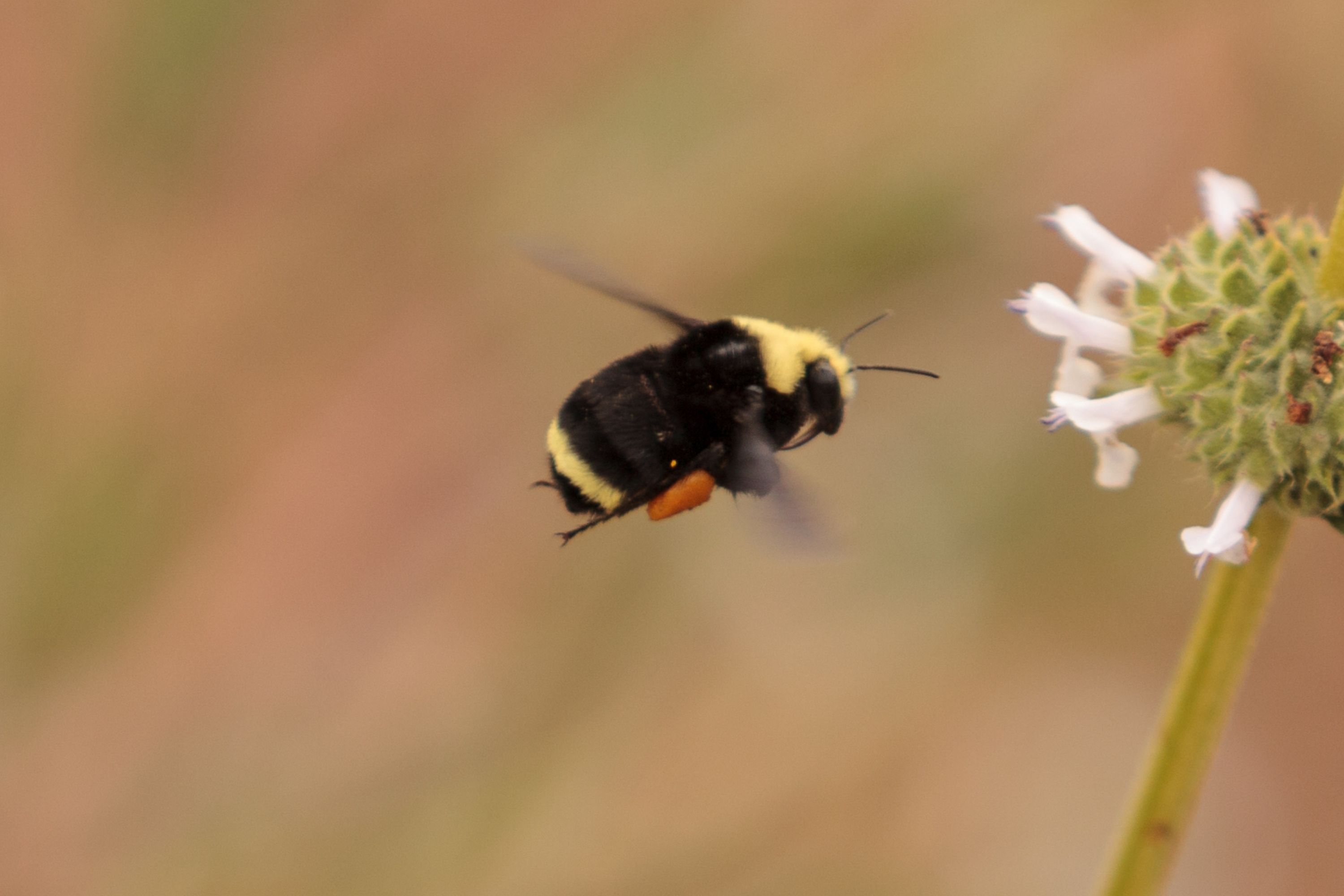Western bumblebee
(Bombus occidentalis)

Description
Bombus occidentalis, the western bumblebee, is one of around 30 bumblebee species present in the western United States and western Canada. A recent review of all of its close relatives worldwide appears to have confirmed its status as a separate species. Western bumblebee workers have three main color variations. The first color variation is found from northern California, north to British Columbia, and east to southwest Saskatchewan and Montana. B. occidentalis in these areas have yellow hair on front part of thorax. They are also marked by black hair segments on the basal section of the fourth abdominal segments have black hair and whitish lower edge of the fourth and fifth abdominal segments. In addition, they also have sparse whitish hairs that may appear black on the sixth abdominal segment, and an entirely black head. The second color variation is found along the central coast in California. It has yellow hair on the sides of the second abdominal segment and all of the third abdominal segment and a reddish-brown hair on fifth abdominal segment. The third color variation is found from the Rocky Mountains to Alaska. It has yellow hair on the thorax behind the wings and on the rear of the second and all of the third abdominal segments. Bombus occidentalis was once one of the most common bee species in the North West America. They have been found from the Mediterranean California all the way up to the Tundra regions of Alaska, making them one of the bees with the widest range geographic range. However, recently there has been a noticeable decline in population. In the past decade, the population of B. occidentalis has dropped by around 40.32%. The disappearance of these bees have been especially significant in California, western Oregon, and western Washington. The range and persistence of B. occidentalis has also gone down by around 20%. Some scientists point to the rise of Nosema, a parasite, as the reason for the decline in population. Others say that the population decline could have come because of the invasion of European honey bees. A recent study in 2016 suggests that the Western bumblebee population is rebounding, possibly due to evolutionary development of resistance to Nosema.
Taxonomic tree:







